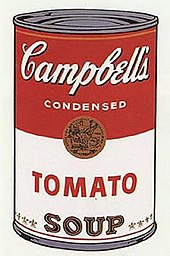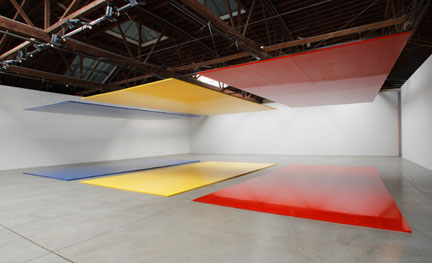
The Peloponnesian War (431-404 BC). Achilles on a Kylix drinking cup.

Crusades (1095-1291 AD) Pendant depicting Jesus, between made between 1080-1120.

Napoleonic Wars (1803–1815) Napoleon, 1812.

American Civil War (1861–1865) Albert Bierstadt above in 1863.

World War I (1914–1918) Egon Schiele, 1911.


World War II (1939–1945) Horrible Nazi art 1941. Jackson Pollock, 1943

Vietnam War (entire war 1955–1975) Andy Warhol, Campbell's Soup I, 1968. Carl Andre, The Way North and East (Uncarved Blocks), 1975.


War on Terror (2001–Present) Zilvinas Kempinas, Double O, 2008.
Robert Irwin, Whose Afraid of Red, Yellow, and Blue, 2007.
This post was inspired by a Robert Irwin Lecture at LACMA where he boils down most of art history to a couple sentences relating to the color red. basically he says:
1: Jesus on the cross covered in blood. (god)
2: The king wearing red. (king)
3: The red hat of a peasant. (people)
4: A still life with a red apple. (things)
5: Red square (materials)
6: The green you see when you look at something red and then look at white. (perception)
Basically this represents a slow leveling of high and low to just perception. I began thinking about what that leveling out might mean and I thought I would make this post relating art history to war history. Do art movements embody certain ideologies that allow for certain types of war? I don't know.
Please leave comments

No comments:
Post a Comment